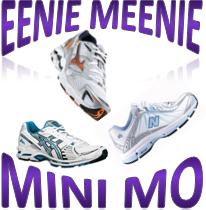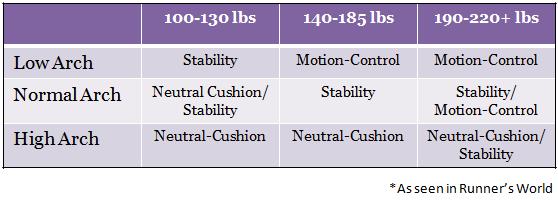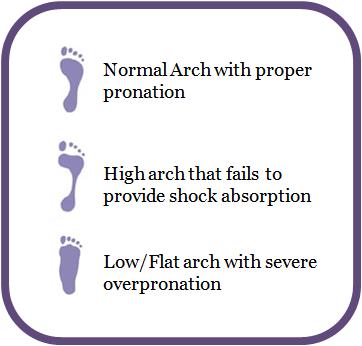|
How to Choose a Running Shoe
Knowing how to choose a running shoe would've been a good tool to have before I left for the Army...it would’ve saved me a lot of pain. Apparently I have high arches. High arches hinder the foot from absorbing the shock produced by running. The shoes I had failed to compensate for that. As a result, according to the Army doc, it caused unnecessary stress on my hips, knees and feet (and a whole lot a pain). I finished training with stress fractures in my right foot that still haunt me to this day and knee pain that brought me to tears. Once I was fitted properly (and healed) things drastically improved. Moral of the Story Invest not only in a good pair of shoes, invest in the right pair of shoes! Walking shoes, cross trainers, aerobic shoes and running are not multi-purpose. They were developed with differing amounts of stability and cushion. And, the ones you have been wearing since high school aren’t going to cut it either. Leave it to the Pros Still, I suggest you take it a step further. Go to your local running store where they are trained and specialized in how to choose a running shoe (or walking shoe) that is perfect for you. They will watch you walk, maybe even run on a treadmill, and get you fitted for the right shoe (usually for no fee). Remember, not all feet were created equal. There are different shoes for those with high arches (like me), normal arches, and low arches. You weight will also be a factor in whether you need stability, neutral-cushioned or motion-control.
Do the Test If you don’t have a running store near you or you rather buy your shoes online, here is a test I found in my Runner’s World magazine to guide you on how to choose a running shoe.

Stability Shoe For runners with low-normal arches, and those that have a mild-moderate inward roll when the foot hits the ground (pronation). When not supported properly, unnecessary stress is placed on the ankle, lower leg, knee, and lower back. A stability shoe will limit this overpronation and limit the stress. A good stability shoe should not bend easily throughout the arch of the shoe (if you can bend the shoe back and forth between your hands, and the middle flexes, run the other way). Neutral-Cushioned This shoe is great for a person with pretty rigid arches. Because the arches are rigid, they are unable to absorb the shock produced by running. For this reason, this type of foot needs a shoe with cushion that is fairly flexible through the arches. Motion-Control This shoe is specifically for those with flat arches. These type of feet have a severe inward roll when they hits the ground (overpronation). Again, this causes stress on the knees and lower back. This type of shoe can correct this excessive foot motion by providing firm support with a rigid arch and rear-foot control. Again, this shoe should not bend easily throughout the arch of the shoe (if you can bend the shoe back and forth between your hands, and the middle flexes, run the other way). There you have it... I'm not saying you have to shell out 150 bucks. There are definitely quality shoes out there in the seventy to a hundred dollar range. It is worth the time, effort and the money. If you end up injured you're going to derail your weight loss efforts (and or exercise goals) and end up very frustrated. Don't neglect your feet. Take the time and choose the right shoe.
A complete guide for running a race.
Leave How to Choose a Running Shoe for Real Moms Real Fit home page
|





